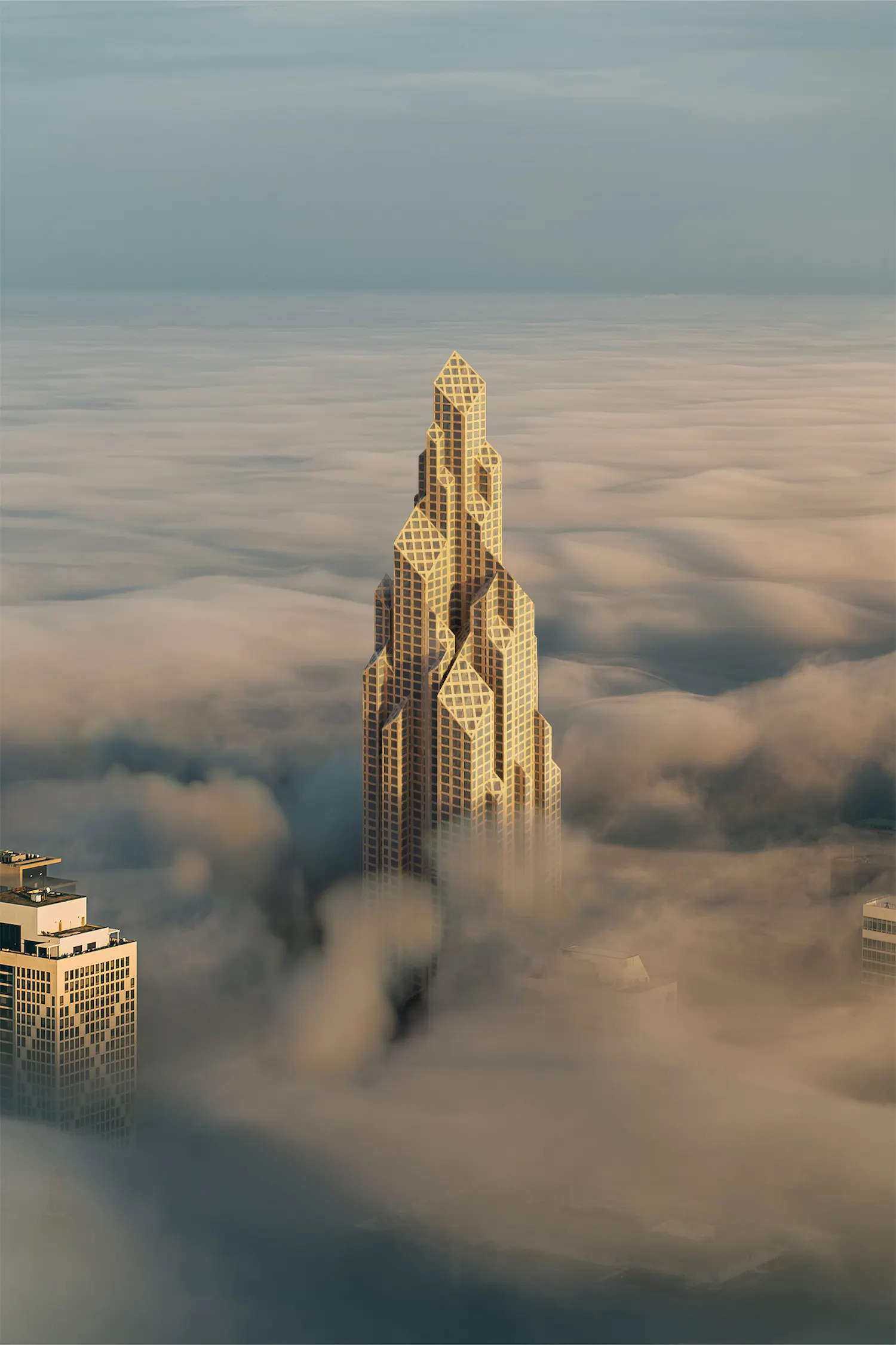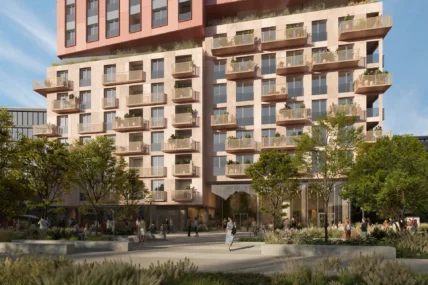Peer’s Sculpture
Reimagining Anthony Peer’s Sculpture as Architectural Animations
A hand-sized object in a modern metropolis
Originally, it was a sculpture—part stalagmite, part totem, part something else entirely. An object meant for stillness. But in the mind of Bence Farkas, a young CGI artist at ZOA Studio working through an in-house creative challenge, it became something different.
A building that was never supposed to be a building at all. Call it architectural jazz: improvised, iterative, and deeply visual.
The brief was simple: take a non-architectural form—preferably something small and sculptural—and imagine it as a tower. Turn an object into architecture.
It shouldn’t be a building
The inspiration came from a geometric wood sculpture by Anthony Peer—an industrial designer whose work circulates on Pinterest and the occasional TrendHunter post. The piece itself is a cluster of interlocking rectangular volumes, offset like tectonic plates or an abstract basalt extrusion.
Bence’s goal wasn’t replication. He treated the form as an architectural model. What would happen if this static, hand-sized object were dropped into the heart of a modern metropolis?
Between context and canvas
To turn an object into a building, Bence started with collage—not with scissors and glue, but with software. Using 3ds Max, he modeled Peer’s form from scratch, adjusting the geometry to echo the original. The materiality shifted—from assembled black walnut dowels to glazed glass façade.
Each image became a fiction. In one, the tower rises through fog above a city skyline, a sci-fi monolith piercing the clouds. In another, the brutalist giant looms over a derelict railyard. The shape stays constant. The materials—and the stories—do not.
A game of scale and site
This wasn’t just about realism—it was about possibility. About how one form, cast in different roles, can evoke radically different architectural futures. “I wanted it to feel like it was meant to be there,” Bence explains.
His method was part technical, part intuitive. “I started by finding the right viewpoint in the reference photo,” he says. “Then I built the model directly into that perspective, adjusting everything so it felt natural in the scene.” He wasn’t simply adding a model to a photograph—he was blending two worlds.
Photoshop became his cinematographer’s toolkit—adjusting light, sculpting contrast, layering haze. Enough atmosphere to imply the building belonged.
For ZOA Studio, known for its photorealistic, VFX-rich visualizations for architects and developers, this kind of exercise sharpens an essential belief: images aren’t just marketing—they’re instruments of design.
Modern interfaces
In a time when buildings increasingly behave like interfaces—between climate, people, infrastructure, and culture—why shouldn’t design begin with an object? A vase. A chair. A sculpture.
Bjarke Ingels, founder of BIG, once called architecture “the art of turning fiction into fact.” This project pushes the idea further: fiction as architecture. A wooden sculpture as urban speculation.
Anthony Peer’s piece was never meant to be a tower. But in the right frame, with the right materials and under the right light, it became something more. A mirror of architectural thinking: curious, courageous, and quietly radical.
We wish to thank Anthony, artist and designer, for creating such compelling forms that open new avenues in architectural visualization. Follow his work on Instagram: @antpeermakes.



